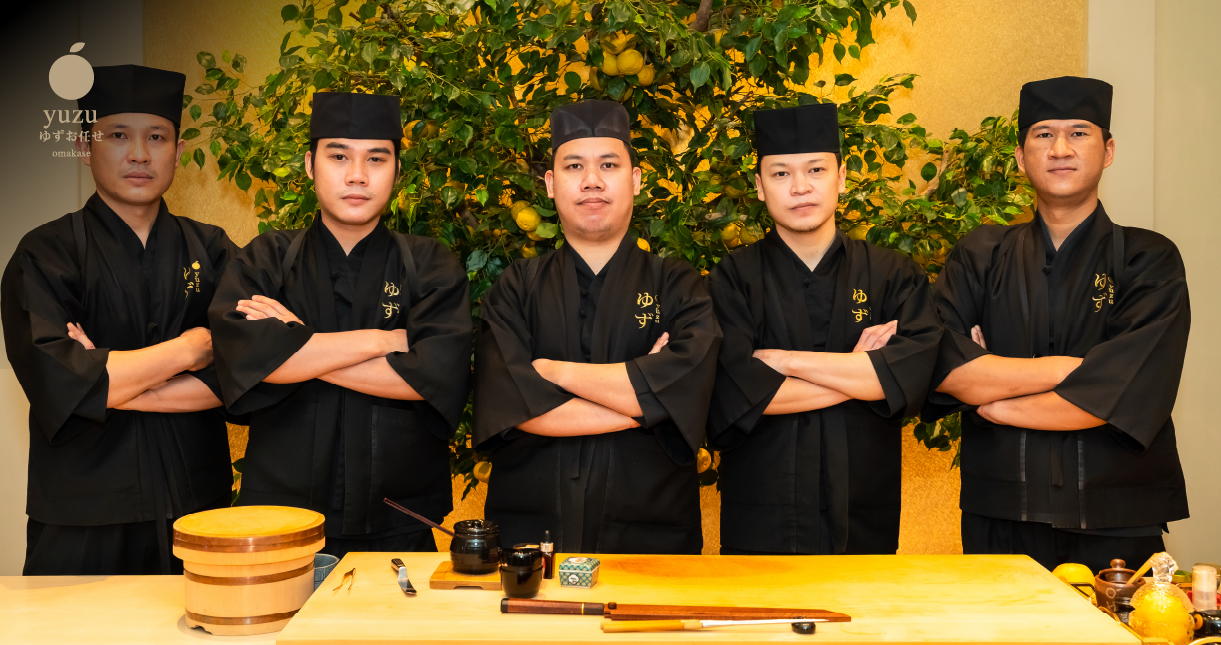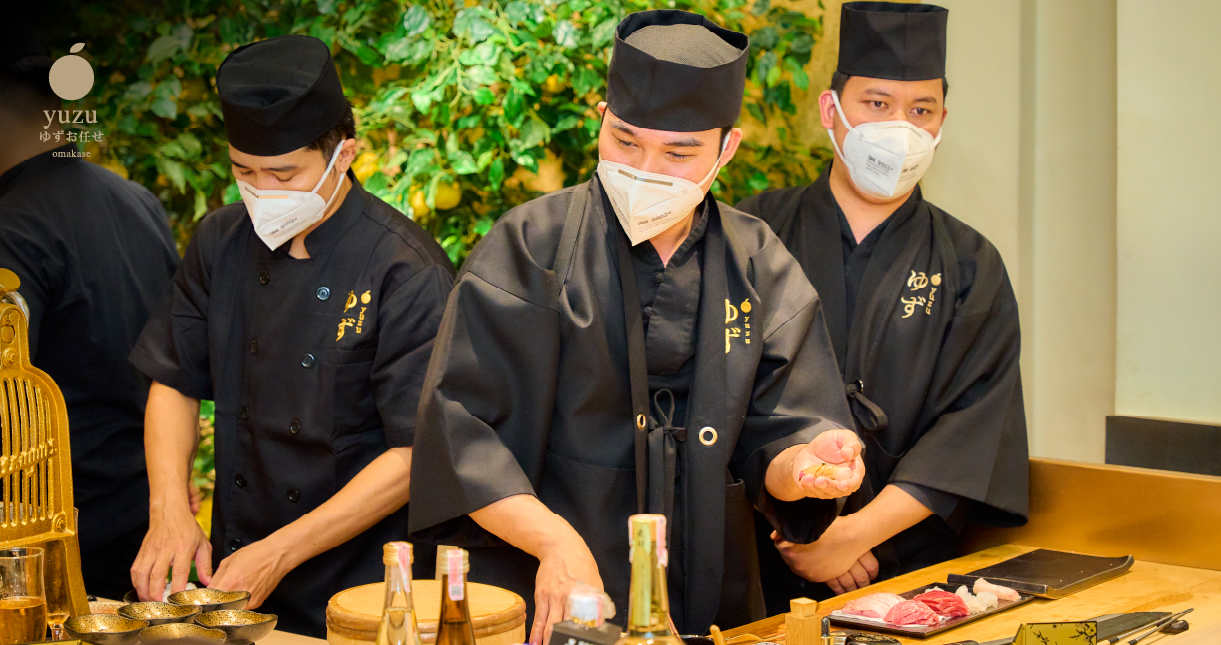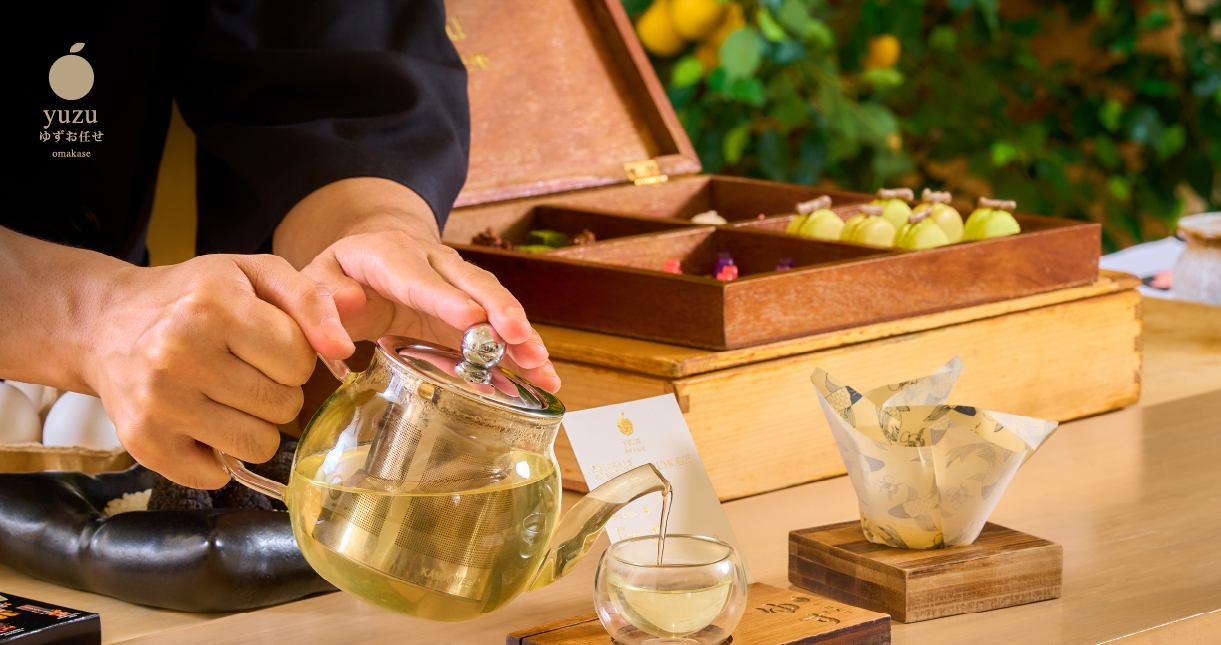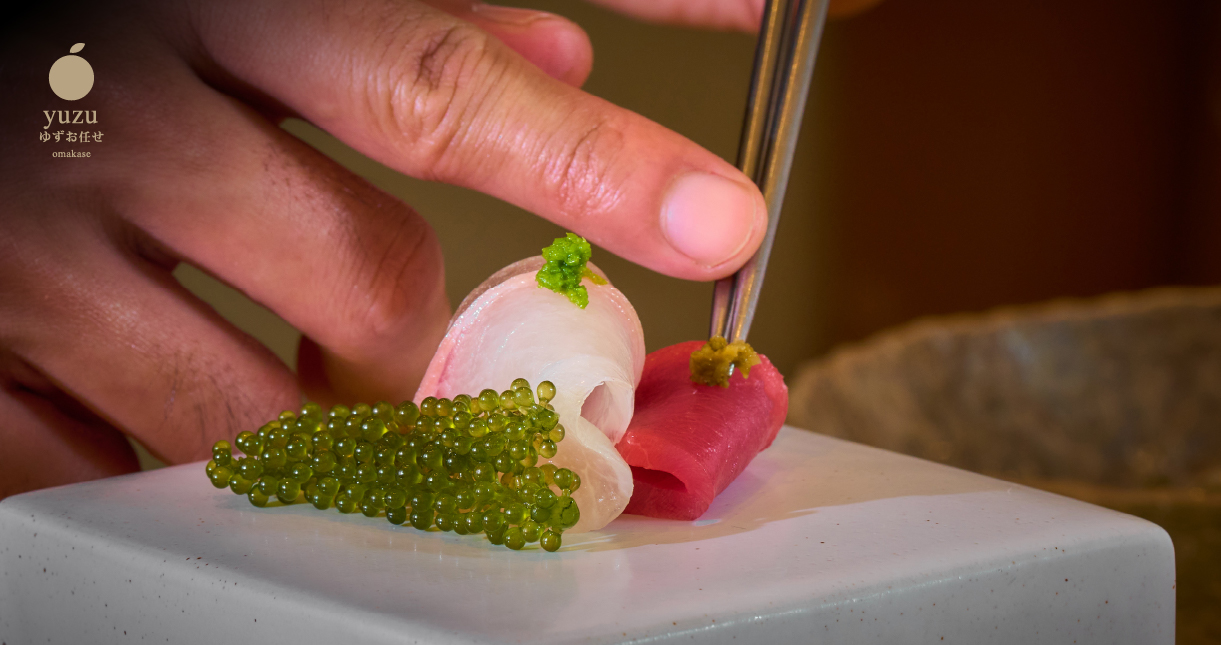
The Global Influence of Japanese Cuisine: A Spotlight on Omakase
Japanese cuisine has long captivated food lovers around the world with its refined flavors, attention to detail, and deep-rooted cultural significance. Among the various aspects of Japanese dining, omakase—a chef-driven tasting menu where diners entrust the chef to craft a personalized culinary journey—stands out as one of the most revered experiences. Once confined to the sushi counters of Japan, omakase has become a global phenomenon, reflecting the growing popularity and influence of Japanese cuisine on the international culinary scene. This article explores the worldwide spread of Japanese cuisine, with a special focus on the omakase dining experience and its impact across the globe.
The World ● 2024 Oct 15
The Global Influence of Japanese Cuisine: A Spotlight on Omakase
The Appeal of Japanese Cuisine

Simplicity and Sophistication
Japanese cuisine is known for its simplicity, where high-quality ingredients are allowed to shine without heavy seasoning or over-complication. This minimalist approach has resonated with people globally, especially as more consumers seek out healthier, fresher options.
Ingredient-Driven
Japanese cuisine, and particularly omakase, emphasizes the purity of ingredients. From the freshest fish to seasonal vegetables, the quality of the ingredients is paramount, and the chef’s skill lies in showcasing their natural flavors.
Health and Wellness
Sushi and other Japanese dishes have become synonymous with health and wellness, as they typically feature lean proteins like fish, nutrient-dense vegetables, and heart-healthy omega-3 fatty acids. This has made Japanese cuisine a popular choice among those seeking lighter, more nutritious meals.
Cultural Appreciation and Global Trends
In recent years, there has been a growing interest in food as a cultural experience, with diners increasingly seeking out authentic and immersive culinary adventures. Japanese cuisine, with its deep cultural heritage and ceremonial aspects, offers a perfect blend of tradition and innovation that appeals to modern diners.
Respect for Tradition
The traditional elements of Japanese cuisine, such as precision knife skills, respect for seasonal ingredients, and the ceremonial aspects of sushi preparation, are highly regarded around the world. These traditions provide a sense of authenticity and craftsmanship that diners appreciate.
Fusion and Innovation
While traditional Japanese cuisine is celebrated, it has also been embraced by chefs around the world who are pushing the boundaries through fusion dishes, combining Japanese techniques and flavors with local ingredients. This adaptability has contributed to the global influence of Japanese cuisine, making it more accessible to a wider audience.
The Global Expansion of Omakase

Omakase: A Unique Dining Experience
Omakase, which translates to “I leave it up to you,” is a dining experience where the chef selects and prepares a series of dishes for the guest, typically based on seasonal ingredients and the chef’s personal creativity. This experience allows the chef to showcase their culinary expertise and create a personalized menu that reflects both their skills and the diner’s preferences.
Personalized and Exclusive
One of the main appeals of omakase is the personal connection between the chef and the diner. As the meal unfolds, the chef explains the ingredients and techniques behind each dish, creating a dialogue that enhances the dining experience.
A Journey of Flavors
Omakase is a culinary journey, with each course building on the previous one to create a harmonious progression of flavors, textures, and sensations. This element of surprise and discovery adds to the allure of omakase, making it a sought-after experience for food enthusiasts around the world.
Omakase’s Journey Beyond Japan
Though omakase originated in Japan, it has successfully expanded across the globe, with high-end restaurants in cities like New York, London, Paris, and Bangkok offering their own versions of the experience. Each locale brings its own cultural influences to the omakase experience, making it both a global and locally adapted phenomenon.
New York
New York City has emerged as a major hub for omakase dining outside of Japan. Renowned sushi chefs, many trained in Japan, have opened restaurants across the city, offering New Yorkers the chance to experience authentic omakase. The diversity of the city’s population has also given rise to innovative omakase menus that incorporate global flavors.
London
In London, omakase has gained popularity in recent years, with sushi bars and high-end Japanese restaurants offering the experience. London’s thriving multicultural food scene has influenced the way omakase is presented, with chefs introducing new ingredients such as British seafood or seasonal vegetables from local farms.
Bangkok
In Bangkok, omakase is becoming increasingly popular among locals and tourists alike. At Yuzu Omakase, for example, diners experience a blend of traditional Japanese techniques with regional Thai influences, creating a unique fusion that reflects the city’s dynamic culinary landscape.
Adapting to Local Palates
As omakase spreads across the world, chefs are finding creative ways to adapt the experience to local tastes and preferences while still maintaining the core principles of Japanese cuisine.
Incorporating Local Ingredients
Many omakase chefs are embracing the use of local, seasonal ingredients to complement traditional Japanese elements. This might include using fish from local waters, incorporating unique herbs and vegetables from the region, or even using local cooking methods alongside Japanese techniques.
Fusion Flavors
In cities like Los Angeles, Miami, and Sydney, omakase menus are increasingly featuring fusion elements, such as blending Japanese techniques with Latin American or Southeast Asian flavors. These innovative dishes reflect the global palate and show how Japanese cuisine can be adapted without losing its identity.
The Luxury Appeal of Omakase
Omakase has also gained a reputation as a luxury dining experience, with some of the most exclusive omakase restaurants around the world offering limited seating, premium ingredients like Otoro (fatty tuna) and uni (sea urchin), and a highly personalized service. The intimate, high-end nature of omakase has made it a favorite among those seeking a gourmet, once-in-a-lifetime experience.
Exclusive Dining
Many omakase restaurants offer only a few seats at the chef’s counter, creating an intimate and exclusive atmosphere. This setting allows for direct interaction with the chef and adds to the prestige of the experience.
Premium Ingredients
At the heart of the omakase experience are the high-quality, often rare ingredients used by the chef. From pristine cuts of bluefin tuna to seasonal delicacies like Kinmedai (Golden Eye Snapper) or Abalone, omakase showcases the finest that the culinary world has to offer.
Omakase’s Influence on Global Dining Trends

Chef-Driven Tasting Menus
One of the key contributions of omakase to the global dining scene is the rise of chef-driven tasting menus. This format, where diners allow the chef to curate their meal, has become a popular trend in fine dining restaurants around the world, inspired by the omakase experience.
Trust in the Chef
Omakase encourages diners to place their trust in the chef, giving them creative control over the meal. This trend has inspired non-Japanese restaurants to offer similar experiences, where chefs present multi-course tasting menus that highlight their skills and creativity.
Seasonality and Sustainability
Like omakase, these tasting menus often emphasize seasonality and sustainability, with chefs sourcing the freshest local ingredients to create dishes that change with the seasons. This focus on the connection between food, nature, and sustainability has become a hallmark of modern fine dining.
The Rise of Intimate Dining Experiences
Omakase has also influenced the global trend toward smaller, more intimate dining experiences. As consumers seek out unique and personalized culinary adventures, omakase-style restaurants, where diners sit at the counter and interact with the chef, have become increasingly popular.
Personal Connection
Diners today crave a more personal connection with the food they eat and the people who prepare it. Omakase offers a direct line to the chef, creating a sense of community and shared experience that is becoming more sought after in an increasingly impersonal world.
Exclusive Spaces
The popularity of omakase has led to the rise of exclusive, small-scale dining venues where the focus is on craftsmanship and quality rather than quantity. These spaces often limit the number of diners to ensure that each guest receives the highest level of attention and service.
The Future of Omakase

Innovations in Omakase
As omakase continues to gain popularity worldwide, chefs are experimenting with new techniques, ingredients, and concepts to keep the experience fresh and exciting.
Molecular Gastronomy Meets Omakase
Some chefs are integrating elements of molecular gastronomy into their omakase menus, using techniques such as spherification, foams, and liquid nitrogen to create visually stunning and avant-garde dishes.
Vegan and Plant-Based Omakase
With the growing demand for plant-based dining options, some restaurants are now offering vegan or vegetarian omakase menus. These innovative menus showcase the same level of craftsmanship and artistry as traditional omakase but use vegetables, tofu, and other plant-based ingredients in place of fish.
Sustainability in Omakase
As global awareness of sustainability and ethical food sourcing continues to rise, omakase chefs are increasingly focusing on sustainable practices. This includes using fish that is responsibly sourced, reducing food waste, and incorporating seasonal, local ingredients into their menus.
Sustainable Seafood
Many omakase restaurants are now committed to sourcing fish from sustainable fisheries, ensuring that the seafood they serve is not contributing to overfishing or environmental degradation.
Reducing Food Waste
The nature of omakase, with its small, carefully curated portions, helps to reduce food waste. Chefs also make use of every part of the fish, from the fillets to the bones, in an effort to honor the ingredient and minimize waste.
Conclusion

The global influence of Japanese cuisine, particularly the omakase dining experience, is undeniable. Omakase has transformed from a uniquely Japanese tradition into a worldwide phenomenon, embraced by food lovers and chefs in every corner of the globe. Its focus on high-quality ingredients, chef-driven creativity, and personalized dining experiences continues to shape global culinary trends, inspiring new interpretations and innovations. As omakase evolves, it will undoubtedly continue to influence the future of fine dining, offering diners a unique blend of tradition, innovation, and artistry. Plan your next culinary adventure at Yuzu Omakase and discover how this timeless tradition has captivated the world.

RELATE








